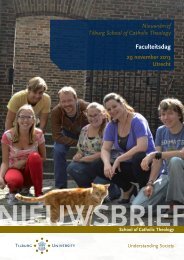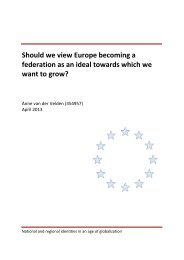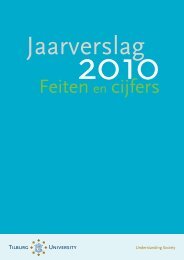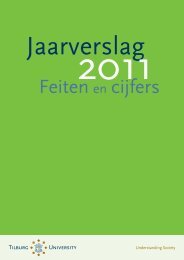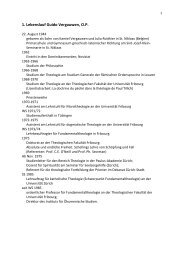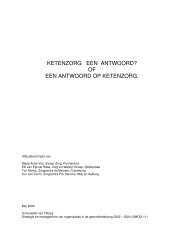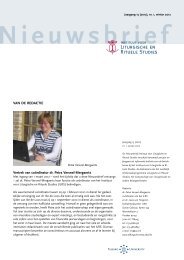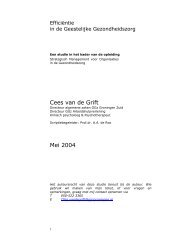Here - Tilburg University
Here - Tilburg University
Here - Tilburg University
Create successful ePaper yourself
Turn your PDF publications into a flip-book with our unique Google optimized e-Paper software.
Author and presenter<br />
Francis, Brian<br />
Authors<br />
Brian Francis; Lancaster <strong>University</strong>, Regina Dittrich and Reinhold Hatzinger;<br />
Wirtschaftsuniversitaet, Vienna<br />
Title<br />
Modelling ranked survey data - a new approach accounting for covariates and<br />
latent heterogeneity.<br />
Abstract<br />
This talk focuses on the analysis of ranked survey response data and is<br />
motivated by a Eurobarometer survey on science knowledge. As part of the<br />
survey, respondents were asked to rank sources of science information in order<br />
of importance. The official statistical analysis of these data examined only the<br />
first two rank positions, and the percentage of times a source was mentioned in<br />
either the first or second position was reported. This failed to use all the<br />
information available in the dataset.<br />
Another issue concerns the heterogeneity of ranked responses. We might<br />
suppose that there is variability in the ranks across individuals which can be<br />
explained either through known covariates or through a random effects<br />
formulation which would incorporate the effect of unknown and unmeasured<br />
covariates.<br />
In this talk we propose a method which treats ranked data as a set of<br />
paired comparisons which places the problem in the standard framework of<br />
generalized linear models. This formulation also allows respondent covariates to<br />
be incorporated. The model can be interpreted through the worths of each item,<br />
and the effects of covariates on the worths.<br />
An extension is proposed to allow for heterogeneity in the ranked<br />
responses. The resulting model uses a nonparametric formulation of the random<br />
effects structure, fitted using the EM algorithm. Each mass point is multivalued,<br />
with a parameter for each item and masspoint. The resultant model is equivalent<br />
to a covariate latent class model, where the latent class profiles are provided by<br />
the mass point components and the covariates act on the class profiles. This




